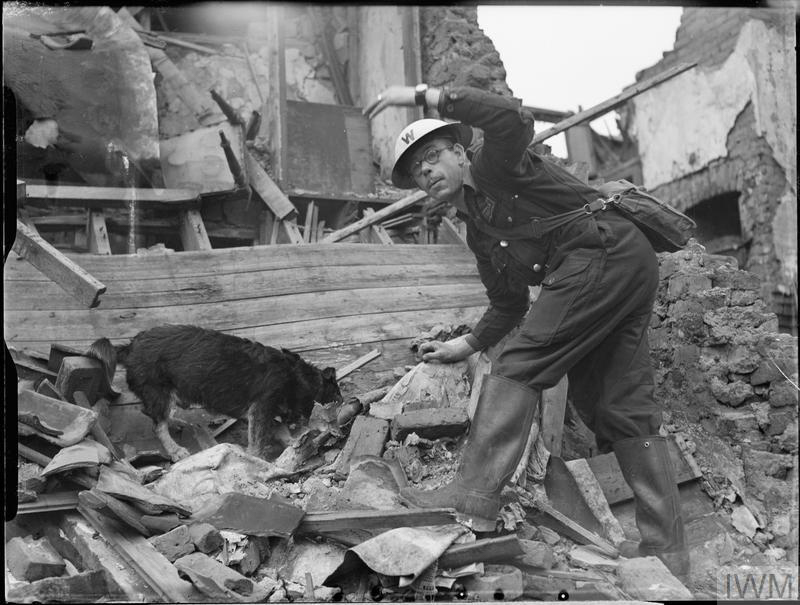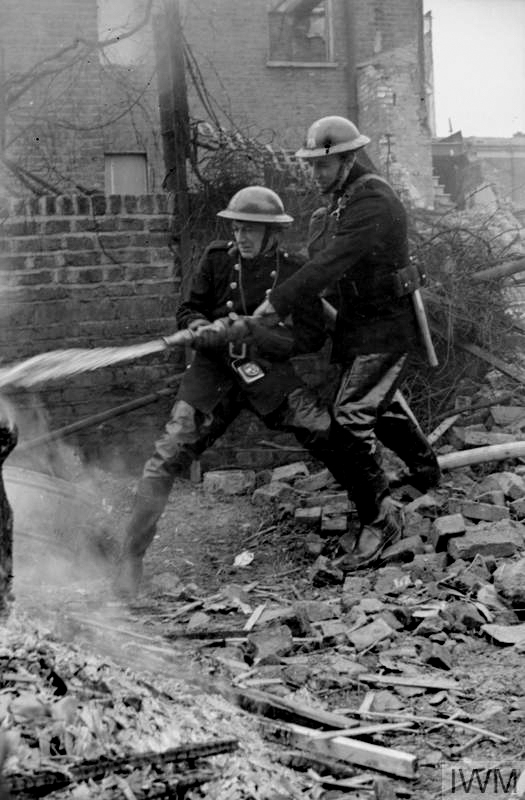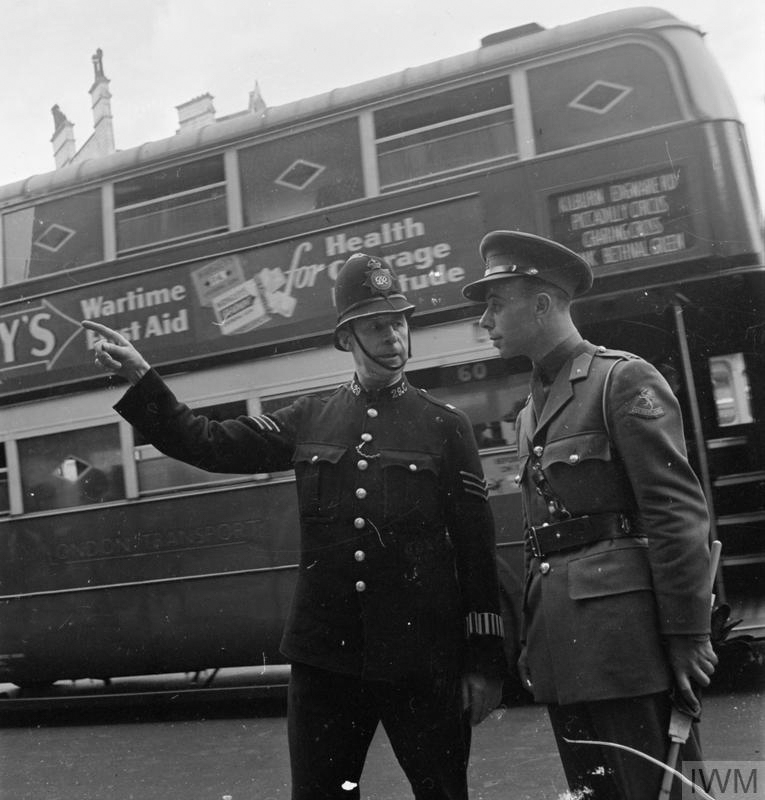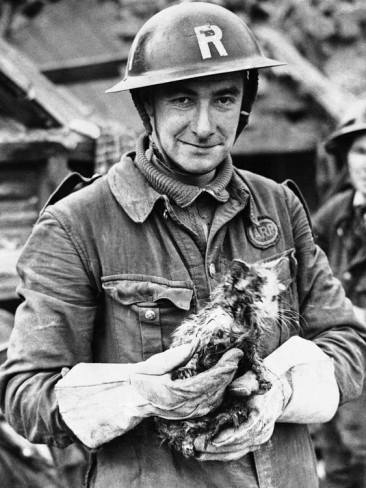During the Second World War there were a number of civilian volunteer organisations, including the ARP Wardens Service and the Auxiliary Fire Service. Over 25 of my ancestors were members of such organisations. Read more about them and their role.
ARP
With the rise of Hitler and the increased threat of war, in March 1935 the Home Office created the Air Raid Precautions (ARP) Department to take overall control of civil air defence. In April 1937, the Air Raid Wardens’ Service was created which aimed to recruit some 800,000 volunteers, with 700,000 joining by the Munich Crisis of September 1938. Local councils were responsible for organising all the necessary ARP services in their areas. Men and women of all ages became wardens, with a significant number of veterans of the First World War. Only men could serve in gas contamination, heavy and light rescue, and demolition services.
The role of an ARP warden was to ensure that the blackout was observed (designed to ensure that the German bombers wouldn’t be able to see their targets in the British industrial towns), sound air raid sirens, safely guide people into public air raid shelters, issue and check gas masks, evacuate areas around unexploded bombs, rescue people where possible from bomb damaged properties, locate temporary accommodation for those who had been bombed out, and report to their control centre about incidents, fires, etc.
Specialist branches of the ARP included:
- Rescue services: getting the dead and injured out of bombed premises.
- Decontamination: specialists trained to deal with and clean up incidents involving chemical and gas weapons.
- Stretcher parties: to carry the injured to first aid posts.
- First aid parties: give first aid to the injured.
- Ambulance drivers.
- Messengers: to take messages from wardens to either the sector post or the control centre. They were often Boy Scouts or Boys’ Brigade members aged between 14 -18.
- Report and control: central headquarters that received information from wardens and messengers and managed the delivery of the relevant services needed to deal with each incident.
On the outbreak of war ARP wardens appeared almost overnight in every street in Britain. From this point until almost the end of the war, the machinery of civil defence would remain permanently alert. Posts were set up on many street corners, meaning that people always knew where they could go for help. In London there were approximately ten posts to the square mile. Divided into sectors, each post had between three and six wardens who had local knowledge of the location of shelters, utilities (water, gas, electric), what buildings contained (important for the fire services) and who was resident in their sector.
During the seven-month Phoney War between the declaration of war and the first bombings on British towns in 1940, there was a long period when nothing happened. ARP wardens mainly offered advice, issued gas masks and air raid shelters (such as the external Anderson and internal Morrison shelter), and patrolled the streets to enforce the blackout. If a light was spotted, the warden would alert the person/people responsible by shouting something like “Put that light out!”. They could report persistent offenders to the local police.
The role of ARP services came into their own during the Blitz of 1940-41. ARP control centres would sound the air raid sirens and wardens would marshal people into the shelters and then watch out for the fall of any bombs within their sector – often done during air raids and therefore highly dangerous. When the wardens came across the site of a bombing they would telephone for the emergency services, render first aid to victims with minor injuries and deal with small fires (placing sand on incendiary devices). Other duties included helping police areas suffering bomb damage and helping bombed-out householders. They were also tasked with keeping an emergency under control until official rescue services arrived.
Only a small percentage of ARP wardens were full-time and were paid a salary (£3 for men, £2 for women), but most were part-time volunteers who carried out their ARP duties as well as full-time jobs. Part-time wardens were supposed to be on duty about three nights a week, but this increased greatly when the bombing was heaviest. Around 1.4 million ARP wardens volunteered during the war, of which some 7,000 were killed. Full-time ARP staff peaked at just over 131,000 in December 1940 and by 1944, with the decreasing threat from enemy bombing, the total of full-time ARP staff had dropped to approximately 67,000. Volunteers in 1944 numbered nearly 800,000.
Read more about ARP wardens on the website of John Simkin.

Auxiliary Fire Service (AFS)
The AFS was first formed in 1938 to supplement the work of local fire brigades, who it was envisaged would not be able to cope with the scale of operation required by enemy bombing. For example, in Liverpool the regular Fire Brigade had 17 pumps and under 200 firemen, while the planned AFS would have over 4,000 personnel manning 400 pumps.
Fire stations were set up in schools, garages, and factories. A recruitment drive was launched, with over 28,000 firefighters needed. Volunteers included men and women, the latter mainly in an administrative role. The public’s opinion of them changed significantly because of the Blitz. During the Phoney War firefighters had been thought of as ‘army dodgers’, but in 1940 this attitude changed as they became known as ‘the heroes with grimy faces’.
In Britain at this time however, there was no national fire service. Instead, there were over 1,600 separate brigades, each with their own procedures, drills, and equipment. Thus, at first things were chaotic. It was left to local authorities to provide the stations, recruit the personnel, and to train and equip them. Many AFS were almost entirely separately run from the professional fire brigades, with little integration or cooperation. It would often happen that an appliance sent from a brigade only 20 miles away would find that the fittings on the hose and other equipment differed from the local brigade and so were useless. These obvious shortcomings led to the formation of the National Fire Service in August 1941.

Special Constabulary
The Special Constabulary is the part-time volunteer section of the police force that dates from 1831. Its officers are known as special constables and have identical powers to the regular colleagues they work alongside. During the Second World War, besides their normal duties, they were trained to deal with a range of eventualities such as first aid in case of injury, initial coordination of the security of aircraft crash sites, clearing people from the vicinity of unexploded bombs, handling of unignited incendiary bombs and checking compliance with lighting regulations.
On the eve of the war there were some 60,000 police officers in England and Wales divided between 182 separate police forces, fewer than 300 of which were women, who were largely confined to dealing with family problems. The war required young men to fight it, meaning that in 1939 police numbers were reduced as reservists joined their units and potential new recruits instead volunteered for military service. The ranks were made up by recruiting reserve policemen, special constables, and more women officers. In 1944 there were 43,000 regular police officers and 17,000 War Reserve Police and Special Constables. The police grew older as the war progressed as men stayed on past their retirement date or enlisted as reserve constables or specials. Police duties increased because of the war. In addition to their usual tasks of keeping the peace, pursuing criminals, making sure that the traffic flowed freely, they had new duties – enforcing the wartime blackout, assisting the rescue services during and after bombing raids, checking on enemy aliens in the country, pursuing army deserters.


